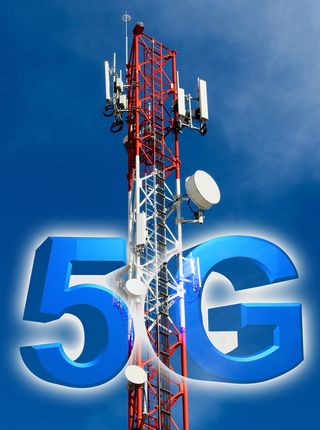COVID-19, Conspiracy Theories, and 5G Networks

Distressing times stimulate conspiracy theories, and the COVID-19 pandemic is no exception. At the start of the outbreak, one prominent theory suggested that the coronavirus is a dangerous biological weapon, designed by human beings in a military lab in Wuhan. But recently a different conspiracy theory has gained momentum, claiming that national governments and network companies have enabled the pandemic through the radiation of 5G networks.
Different variants of the theory exist. Some assume that not the coronavirus but 5G radiation is the real cause of COVID-19; others assume that 5G networks have lowered people’s immune response to the virus; and yet others assume that 5G networks facilitate the spread of the coronavirus. To bolster these theories, reports have claimed it is no coincidence that the world’s first 5G-masts were in Wuhan—a misleading claim as 5G was piloted in multiple cities, and there have been severe COVID-19 outbreaks in parts of the world without any 5G network (e.g., Iran).
Despite a lack of evidence and logic, these conspiracy theories have been frequently shared through social media. Also, well-known public figures have promulgated the theory. In the US, the actor Woody Harrelson has sparked controversy by expressing support for the theory on Instagram. In the UK, around 65,000 people watched a livestream of the conspiracy theorist David Icke about the presumed link between 5G and COVID-19. How do such conspiracy theories emerge, and how harmful are they?
Fears of 5G networks existed well before the virus outbreak. These fears included health concerns, but also that 5G would allow governmental institutions unprecedented control over the lives of citizens. COVID-19 has made both of these fears a reality. Citizens are at increased risk of contracting a dangerous illness, and their usual freedoms are heavily constrained by governmental lockdown measures to reduce the spread of the virus. In their minds, conspiracy theorists have connected these dots, creating the illusion of a link between COVID-19 and 5G networks.

In principle, there is nothing unusual about people mentally connecting dots. The human mind is equipped with the functional capacity to detect patterns: Meaningful and existing causal relationships that enable people to understand and predict their environment. In fact, the whole scientific enterprise is about detecting and understanding existing patterns, and everyone benefits from that. Smoking causes cancer, and CO2 emissions cause global warming—useful knowledge that may help people protect their health and the world’s future.
When people feel anxious or threatened, however, the pattern-seeking mechanisms of the mind sometimes overreact, leading people to detect causal relationships between stimuli that in fact are unrelated—illusory pattern perception. Such illusory pattern perception is part of conspiracy thinking. Research reveals that seeing patterns in a range of coin toss outcomes (that actually were generated through a random process) predicts how strongly people believe conspiracy theories (Van Prooijen, Douglas, & De Inocencio, 2018). In their desire to understand the pandemic, conspiracy theorists have drawn illusory patterns in their minds, leading them to blame modern communication technology.
While originating from a distortion of an otherwise normal mental process, conspiracy theories linking 5G networks with the coronavirus are far from harmless. The patterns that people believe exist in the world determines their behavior. I trust science, and am convinced that smoking causes cancer; therefore, I do not smoke. When people believe that 5G networks cause the most impactful global crisis in decades, they will respond to that, too.
One possible consequence of conspiracy thinking is hostility. If people believe that a conspiracy threatens the life and well-being of large groups of innocent citizens, they may show resistance—effectively, they may turn into freedom fighters trying to oppose an imaginary enemy. This can have real consequences, however. In various EU countries – the UK, and the Netherlands – activists have set 5G masts on fire, and police officials strongly suspect a link with COVID-19 conspiracy theories.
Also, public health is at risk because of such conspiracy theories. Recall that some theories assume that not the coronavirus but 5G radiation causes COVID-19. Such a belief may lead people to avoid being in the vicinity of 5G masts yet ignore the safety regulations of health officials. More generally, conspiracy theories go hand in hand with low trust in evidence-based medical science. Anti-vax movements thrive on conspiracy theories, and conspiracy beliefs are associated with a preference for alternative medical approaches to cure illnesses (Lamberty & Imhoff, 2018).
Such responses reflect the irony of conspiracy thinking: In an attempt to protect themselves and others, people actually make things worse by rejecting the science and communication technology that is sorely needed in times like these. During this pandemic it is of utmost importance to stay cool-headed and distinguish between real versus illusory patterns using the principles of logic, reason, and science.


